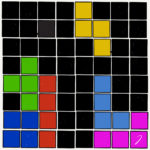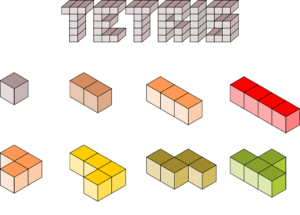
Post-traumatic stress disorder (PTSD) is a highly debilitating condition. Since traumatic events themselves are difficult to prevent, there is heightened interest in preventing the onset or symptoms of PTSD after the event has already occurred. Both pharmacological and behavioural interventions have been proposed as potential candidates, with insofar scarce results.
However, in a recent trial published in Molecular Psychiatry, Iyadurai and colleagues claim to have identified a potentially effective behaviour intervention for preventing post-trauma intrusions (Iyadurai et al, 2017).

This recent proof-of-concept RCT claims to have shown a short behavioural intervention can prevent post-traumatic intrusions.
Methods
The authors conducted a two-arm randomised controlled trial (RCT). The trial was registered (NCT02080351) and the authors have made the data and materials available on the Open Science Framework.
Participants were adults who had been involved in a motor vehicle accident (either as directly experiencing it or as witnesses) and who consequently met the first criterion of the DSM-IV for PTSD. Participants had to have been seen in an emergency department within 6 hours of leaving the scene of the accident, to report memory of the accident, be alert and orientated, and to have sufficient mobility to play a computer game. Accident victims were excluded if they had lost consciousness for more than 45 minutes, reported a history of severe mental illness, substance abuse or neurological conditions, or were presently suicidal.
The procedure involved a web-based randomisation system and group allocation. Participants were kept blind with regards to whether they were receiving the active intervention or the control. The same researcher delivered both interventions. Outcome measures were completed remotely, online or mailed by post.
The intervention consisted of a reminder cue for the traumatic event, in which participants were asked to think back to the accident and briefly relate the worst moments that came to mind, followed by playing the game Tetris uninterruptedly for at least 10 minutes. This intervention was informed by the authors’ previous preclinical work with healthy volunteers exposed to an experimental analogue for psychological trauma. The control condition consisted of asking participants to fill in an activity log unrelated to the accident.
The primary outcome measure was the total number of intrusive memories at one week following the traumatic event, as assessed by the participants by use of a diary started on the day of the accident. Participants were given a definition of intrusive memories and asked to record them by ticking a box for the day and time period in which it occurred.
Secondary outcome measures included post-traumatic distress symptoms, assessed by the Impact of Event Scale-Revised (IES-R), which includes specific subscales for intrusions, avoidance and hyperarousal. The authors also assessed PTSD severity, depression and anxiety. These were assessed both at 1 week and at 1 month post-trauma.
Statistical analyses were primarily intent-to-treat (ITT), including all randomised participants, with missing data estimated using multiple imputation. The authors also reported per protocol (PP) analyses, which included all participants that received the intervention and completed the 1 week and 1 month evaluations.
Power analyses tailored to detect a large effect size (d= 0.7) with 80% power indicated 66 participants would be required.

Survivors of motor vehicle accidents were asked to play the game Tetris after a brief reminder of the accident. The primary outcome measure was the total number of intrusive memories at one week after the accident.
Results
- 71 participants were randomised (37 to the intervention and 34 to control)
- Adherence to treatment was similar and high in both two groups: only one participant in the intervention group did not complete the intervention.
- In both ITT and PP analyses, there were significantly fewer intrusions in the intervention (mean= 8.73, standard deviation= 11.55) than in the control group (mean= 23.26, standard deviation= 32.99) at 1 week, as assessed by the intrusion diary (effect size 0.67). Similar results were obtained for the Intrusion subscale of the IES-R.
- In both ITT and PP analyses, there were no significant differences at 1 week for post-traumatic distress, PTSD symptoms or anxiety and depression.
- Moreover, at 1 month follow-up the groups did not differ on any of the outcome measures considered, including intrusions measured with the subscale of the IES-R.
- Using the PTSD outcome measure, the authors also coded the number of participants that were consistent with a PTSD diagnosis at 1 month. There were 4 cases in the intervention group and 3 in the control group, but the difference was not significant.
- No adverse effects were registered.

The Tetris intervention reduced intrusions at 1 week, but differences with the control dissipated at 1 month.
Conclusions
The authors interpret the trial as:
compelling translation of previous laboratory findings.
They describe the intervention as “science-driven” and liken it with a:
cognitive ‘therapeutic vaccine’ (…) that could be administered soon after a traumatic event (cf. rabies vaccine after a dog bite) to prevent intrusive memories of trauma in the subsequent week.
Strengths and limitations
Despite general agreement that translating laboratory findings into treatment interventions is an important way forward for mental health research, actual clinical trials have been few, making this trial very relevant. Other strengths include trial registration, and steps to minimise risk of bias (proper randomisation, independent group allocation, intent to treat analysis). Making the data and material openly available is also commendable.
That said, the actual findings are effectively more modest and unstable and the authors’ unbridled enthusiasm in discussing their results unjustified.
Important limitations and caveats include:
- The authors seem to be targeting memory intrusions as both a relevant clinical outcome in itself, but also as a risk factor for developing PTSD. However, it is important to underscore that this trial does not say anything whatsoever about the prevention of PTSD. Not only is PTSD actually rare in the population of motor vehicle accident survivors (with epidemiological surveys (Stein et al, 2016) placing it around 1.4% at 1 month and 2.8% at 1 year), but moreover there is only weak and inconclusive evidence for the presumed link between memory intrusions and subsequent PTSD (Creamer et al, 2004).
- The authors chose to assess the primary outcome on an intrusion diary, the reason being ensuring comparability with their own preclinical work. Outside of their own work, there is no systematic assessment of the reliability or validity of this measure. The authors did include a reliable and validated measure of intrusions (the Intrusion subscale of the IES-R), which was even validated on the type of population targeted in the trials (Beck et al, 2008) and it is surprising they only considered this as a secondary outcome.
- In fact, on this validated measure for intrusion, only small group differences were seen at post-test and no significant differences at 1 month follow-up. Also, there were no differences on any of the other outcome measures at 1 month. The authors fully attribute this lack of effect to insufficient statistical power. Nonetheless, another possibility is that the 1 week effects were small and transient.
- While not discussed in the paper, the laboratory findings that the trial aims to translate (testing theories of memory consolidation and reconsolidation, which the authors seem to combine) are much less firm and reliable than implied and have been strongly contested, on both theoretical (Millin et al, 2001) and empirical (Hardwicke et al, 2016).
Summary
This trial was based on uncertain theoretical and empirical foundations, and reported only small, transient effects that disappeared at 1 month follow-up. It is therefore unjustified to compare this Tetris intervention to a promising “cognitive vaccine”.
Moreover, the design of the trial begs the question: what results do we really expect and want from a preventive intervention post-trauma? Following the analogy with the rabies vaccine proposed by the authors themselves: after a wild animal bite, would one be interested in a vaccine that only prevents small paresthesia in the incubation phase?

It is unjustified to coin post-retrieval Tetris as a promising “cognitive vaccine” for post-trauma intrusions.
Disclosure
I am co-author, together with other colleagues, to a letter to the editor about this paper (under review at the same journal), which incorporates some of the ideas presented here.
Links
Primary paper
Iyadurai L, Blackwell SE, Meiser-Stedman R, et al. (2017) Preventing intrusive memories after trauma via a brief intervention involving Tetris computer game play in the emergency department: a proof-of-concept randomized controlled trial. Mol Psychiatry. March 2017. doi:10.1038/mp.2017.23.
Other references
Stein DJ, Karam EG, Shahly V, et al. (2016) Post-traumatic stress disorder associated with life-threatening motor vehicle collisions in the WHO World Mental Health Surveys. BMC Psychiatry. 2016;16:257. doi:10.1186/s12888-016-0957-8.
Creamer M, O’Donnell ML, Pattison P. (2004) The relationship between acute stress disorder and posttraumatic stress disorder in severely injured trauma survivors. Behav Res Ther. 2004;42(3):315-328. doi:10.1016/S0005-7967(03)00141-4. [PubMed abstract]
Beck JG, Grant DM, Read JP, et al. (2008) The impact of event scale-revised: psychometric properties in a sample of motor vehicle accident survivors. J Anxiety Disord. 2008;22(2):187-198. doi:10.1016/j.janxdis.2007.02.007.
Millin PM, Moody EW, Riccio DC. (2001) Interpretations of retrograde amnesia: old problems redux. Nat Rev Neurosci. 2001;2(1):68-70. doi:10.1038/35049075. [PubMed abstract]
Hardwicke TE, Taqi M, Shanks DR. (2016) Postretrieval new learning does not reliably induce human memory updating via reconsolidation (PDF). Proc Natl Acad Sci U S A. 2016;113(19):5206-5211. doi:10.1073/pnas.1601440113.
Photo credits
- Raul Carrillo Garrido CC BY 2.0
- By Thue (Own work) [Public domain], via Wikimedia Commons

